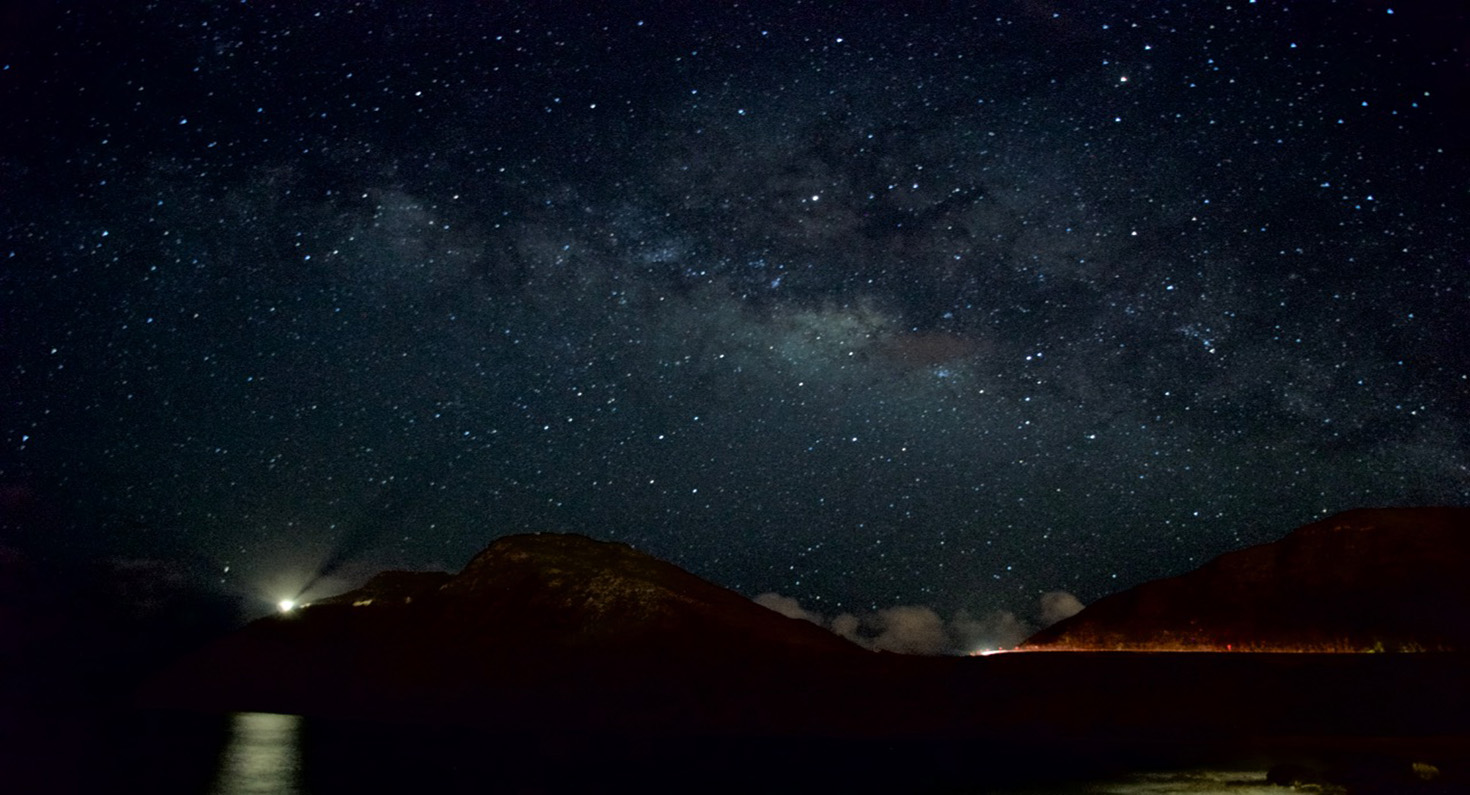
Kaiena Point at night, 2017. Photograph by Jason Jacobs. Flickr (CC BY 2.0).
In 1896 the deposed Queen Lili‘uokalani of the former kingdom of Hawaii sat imprisoned in an upstairs bedroom of ‘Iolani Palace in Honolulu. The monarchy had been overthrown, and the American businessman Sanford Dole ruled as self-appointed president of the new republic.
While under house arrest, Lili‘uokalani labored intently, urgently, over an English translation of the Hawaiian creation chant called the Kumulipo. An epic more than two thousand lines long that had been recited as a prayer at the birth of her great-great-grandfather nearly two centuries earlier, some seventy-five years prior to European contact, the Kumulipo was a cosmogonic genealogy that traced Lili‘uokalani’s ancestral lineage back to the stars.
Hawaiians and others of the Pacific Islander diaspora were advanced astronomers. It was their knowledge of the heavens that enabled them to navigate among and inhabit the hundreds of tiny islands flung across the largest stretch of ocean on the planet, some ten million square miles wide. The Kumulipo gives a narrative frame to this knowledge, beginning with a description of the source of celestial beings:
Came men with great bundles
Which were tied together and hung up in the night of Makali‘i [the Pleiades].
The stars secured were hung in space.
The chant then offers the names of nearly a hundred stars, planets, and constellations. Most of these names Lili‘uokalani could not translate, not knowing the English counterparts for the heavenly bodies or the patterns they made in the sky that were called by her people such things as Kaoluokauka (“accumulation of little things”), Ihumoa (“chicken nose”), Hooleia (“thrown away”), Welo (“trailing”), or Kaalolo (“heap of brains”).
Because the Pacific Islanders did not have written languages, very little about their lives was immediately apparent to European explorers, who had, from first contact in the eighteenth century, mostly observed the islanders at a distance, reporting in their logs that they were dark-skinned, naked people who spoke in strange languages. They recorded that the natives had ships, which they operated without any visible instruments, navigating instead with unknown technology, as if by some kind of mind force; they insisted that the people of the Pacific were primitives who used only the most basic tools. In these logs the islanders’ histories, cultures, and scientific knowledge were muted, overlaid with the narratives of the colonizers. Lili‘uokalani’s translation was an attempt to save what she could of the oral culture of Hawaiians that carried within it their celestial knowledge—in danger, by the nineteenth century, of being forgotten entirely.
Many of the natives had by then died of the diseases that Europeans brought, their bodies of knowledge colonized by the new bacteria and viruses that spread throughout the indigenous microcosmos. In the Marquesas Islands, for example, 85 percent of the population perished in less than a decade, and Tahiti lost 95 percent of its population in the first hundred years after contact. Hawaii lost 70 percent over seventy years, mostly from the introduction of venereal diseases by the crew of Captain James Cook. Hurting matters further, the island’s biotic communities were extremely vulnerable. As habitat was destroyed and non-native invasives were introduced, Pacific plants, snails, birds, bees, moths, and mollusks went into a free fall, in parallel with human populations.
In the 1830s, when Christian missionaries began to arrive in droves, many of them became the accidental ethnographers of the quickly declining indigenous population, recording their stories, myths, and folkways, even as they decried the people as heathens, suppressed their rituals and practices, and worked to convert them. One missionary wrote in his journal in 1841 about a Hawaiian priest named Hoapili who “was much in the habit of observing the traveling stars”—as the planets were sometimes called at the time—“that he could at any moment tell the then-present positions of each.” There were five traveling stars, which Hoapili referred to as Kawela, Naholoholo, Homanalonalo, Holoholopinaau, and Makulu—known in English as Mercury, Venus, Jupiter, Mars, and Saturn—and he had heard of one more but had never recognized it.
It’s entirely likely, too, that the Hawaiians knew long before Galileo that the sun was the center of the solar system. “Strewed the seeds, finest seeds of stars in the heavens,” goes the Kumulipo chant. “Strewed fine seed of gods, the sun became a god.”
The truth is that we don’t know exactly what they knew. Because native islanders did not keep journals of their own encounters with Europeans, there are confounding black holes of indigenous knowledge and history that we have no chance of seeing into, no chance of discovering now. Whole systems of being have largely slipped into the abyss of unknowing. What remains is often hidden in the margins of the written historical record.
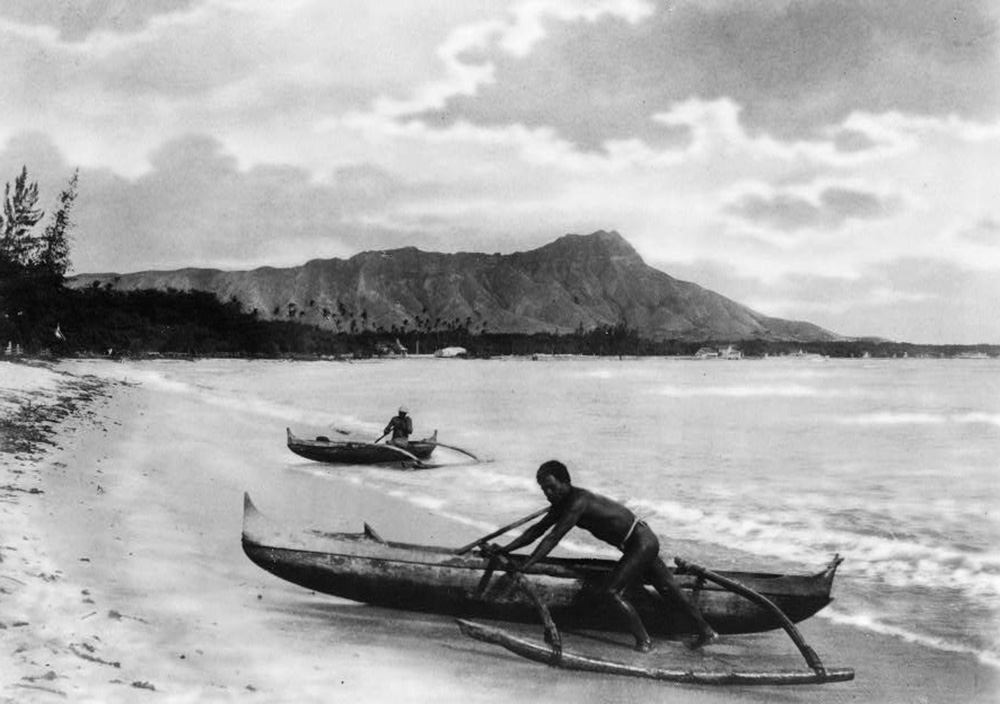
In 1769, on a scientific mission from the Royal Society of England, James Cook sailed to the Pacific to observe the transit of Venus across the sun. The oceans then were vast, dark, unknown expanses—the inner space of the planet—and European powers had been in a kind of space race for the past 250 years, since Magellan had circled the earth, to find new lands. Like newly discovered planets, the Philippines, the Marquesas, the Santa Cruz Islands, Vanuatu, New Guinea, Batavia, Tasmania, New Zealand, the Tonga group, Easter Island, Samoa, Australia, Fiji, and Tahiti had been reached by Europeans who planted their flags. A constellation of islands had begun appearing on European maps where once there was blank blue space.
Concurrent with the West’s interest in filling in the ocean blanks was its interest in outer space. Galileo had in the previous century argued that the sun and not earth was the center of the universe, in 1610 publishing Starry Messenger, in which he described observing with a telescope the rings of Saturn and the moons of Jupiter. The Roman Catholic Church banned the book, and then placed him under house arrest for suspicion of heresy in 1633. But interest in astronomy expanded still, and European explorers were increasingly as eager to find new heavenly bodies as they were to find new bodies of land. What they were not as eager to find out was how much about the heavenly bodies was known by the inhabitants of newly encountered islands in the Pacific.
With his astronomer Mr. Green, Cook was tasked with setting up an observatory on a just discovered volcanic island surrounded by coral reefs in the central South Pacific. (Claimed in 1767 for Great Britain by explorer Samuel Wallis as King Georges Island, this island is today called Tahiti.) The Royal Observatory hoped to determine the distance of the earth from the sun, and it needed observers stationed across the globe.
Cook’s ship was met by natives in canoes, who paddled out with gifts such as pigs, breadfruit, and coconuts. His journals always mention the natives as being in their canoes—to the point that canoes become synonymous with those island people. “This morning we had a great many Canoes about the Ship,” Cook wrote on April 14, 1769.
Cook lugged his instruments ashore—telescope, clock, quadrant—to set up the observatory. Some days previous to Venus’ transit, he and Mr. Green tried to watch an eclipse of one of Jupiter’s moons, “which was hinder’d from seeing by clowds.” The quadrant was stolen one night by a curious Tahitian, who slipped away with it in the dark up the river. It was recovered the next day by sunset. On the day of the transit, they were able to see “the whole passage of Planet Venus over the Sun’s disk.” The expedition’s naturalist, Joseph Banks, brought the island’s king, Tarróa, and his sister Nuna to the observatory. “To them we shewd the planet upon the sun and made them understand that we came on purpose to see it,” wrote Banks. For the Tahitians, Venus was called Ta‘urua-nui, the eldest daughter of the mother of the stars, who sailed her star canoe across the sky. They didn’t share this with Banks, though, nor would he have understood them. He reports that after they looked through the telescope, they returned to their own dwellings. We’ll never know what they thought, peering into the scope. Were they in fact aware that Ta‘urua-nui sailed across the sun on that day, and did they sing a song that night about her passage?
After leaving Tahiti, Cook and his crew explored the Pacific for another year and a half. They very easily would have been lost, wrecked, or killed had they not picked up in Tahiti a priest and navigator named Tupaia (“thinking that he might on some occasion be of use to us”) who navigated them across the ocean’s leagues of blankness—blank as the pages upon which he did not write, blank as the maps and charts that he did not carry with him—directly to its tiny dots of islands. The islands were as lights that blinked in Tupaia’s mind alone, lit up by his language, by speech. From memory, he said the names and described the locations of more than one hundred islands that spangled the seas stretching from Tonga to the Australs, a distance of twelve hundred miles, which Cook took note of in his journals to the best of his ability.
As they sailed through the Society Islands, Tupaia told Cook about the wind and weather patterns and how to make proper use of them; led him to the best harbors for docking; took him through channels in the reefs surrounding the islands; and told him the name of each island, what plants grew on them, and how many people lived there. Cook listened and drew his meticulous Chart of the Society Isles, a map with the inscription “Discovered by Lieut. James Cook, 1769.” He did not credit Tupaia.
When Cook observed the transit of Mercury and “took several observations of the Sun and Moon,” it’s very likely that Tupaia was doing the same thing as navigator but without instruments, pen, or paper. Cook made detailed notes on the ingenious designs of the natives’ double-hulled and outrigger canoes, some of which he estimated carried 140 people, and Tupaia told him that they could sail much faster than his ship. “All this I believe to be true,” Cook wrote. “And therefore they may with Ease sail 40 Leagues [around 140 miles] a day or more.”
In New Zealand, some 2,500 miles away from Tahiti—the distance across the North American continent from the Atlantic to the Pacific coasts—Tupaia spoke to the people in his own language. “It was an agreeable surprise to us to find that they perfectly understood him,” wrote Cook. Building on this observation, Captain Cook set forth perhaps the greatest discovery of his voyage—a scientific theory that he promoted afterward and hoped that someone else might take up to prove for certain. “From all accounts we can learn,” Cook wrote, “these people sail in those Seas from Island to Island for several hundred Leagues, the sun serving them for a compass by day, and the Moon and Stars by night.” This theory would explain “how the Islands lying in those Seas came to be peopled,” allowing Europeans to trace related populations for many hundreds of miles, “from Island to Island quite to the East Indies.”
Cook had the right instinct, and his theory was briefly in vogue back in Europe before being dismissed. Nations that prided themselves on seamanship and sailing—among them England, Spain, and Holland—surely were not interested in a theory that promoted the superior knowledge of savages whose land they meant to take.
Even Cook, who had extensive experience with Tupaia’s navigational skill, had a hard time fathoming how natives had traveled such great distances. When he anchored in Hawaii in 1778—the first European to arrive on that archipelago—on his third voyage to the Pacific, he was still pondering the problem: “I have already observed that these people are of the same nation as the people of Otaheite [Tahiti] and many others of the South Sea Islands, consequently they differ but little from them in their persons…How shall we account for this Nation spreading it self so far over this Vast ocean?” The answer was close to Cook but a language away, embedded in an oral tradition he did not ask about and could not understand.
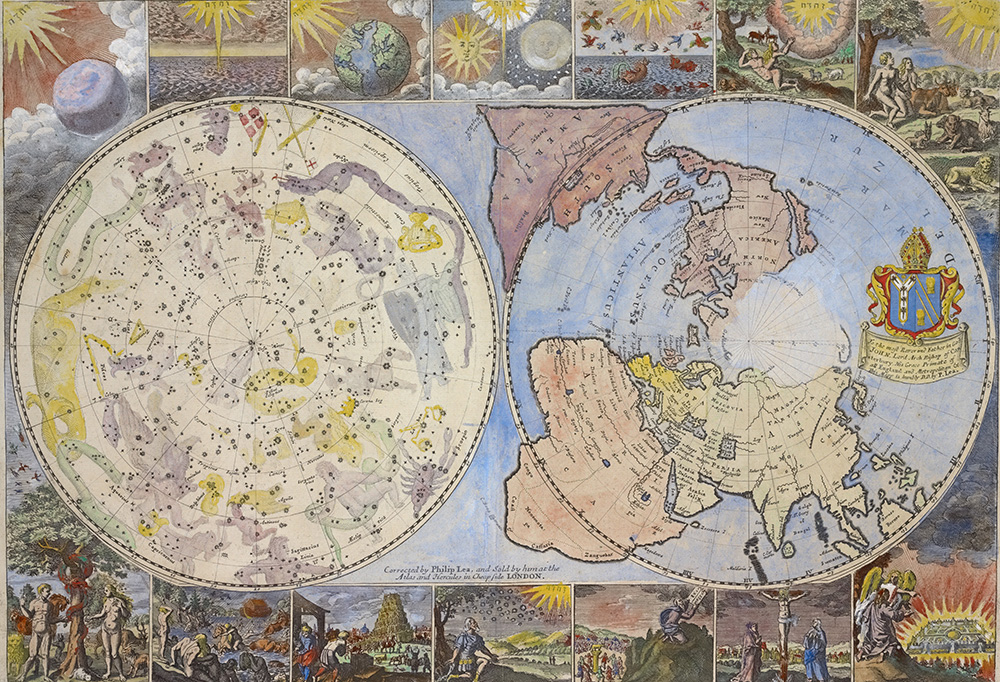
Last summer, in my ninth trip to the islands in twenty-five years, I befriended a Native Hawaiian canoe builder named Hualālai in the region called Kohala on the Big Island. He was working on a voyaging canoe for local schoolchildren who wanted to learn navigation. I showed up at his workshop to watch him piece the boat together and to listen, for he was a gifted storyteller and orator who liked to talk while he worked, alternating between English and Hawaiian. While lashing the beams with rope in a set pattern that creates a design unique to the builder—a task that takes several hours—he sang a navigational chant. O manu o’uka, o manu o’kai.
In the long lineages of Pacific Islander navigators, voyages were repeated from island to island and back again. A sea path was traveled using the paths of stars that had wheeled the same arc across the sky for millennia, and those paths were memorized and laid out in chants that were repeated with each journey, chanted even though no two voyages are ever the same, repetitious verses like the looping tides of the oceans. Such scrawl upon the seas, an elegant script, is traceless in history. Spoken language is a weightless technology for sea travel. Words as maps stored in the memory do not get water-soaked and torn apart in storms. As tools they do not deplete the very limited resources of the islands, as all islands have limited carrying capacities, and all materials for oceangoing must be used wisely.
Although the words were unfamiliar to me, Hualālai’s repeated chanting caused them to form shapes in my mind, and I remembered them for days afterward, unable to get them out of my head. The cadence of the chant would come to me throughout the following days, words and phrases delivered in whole parts, as if an architecture had built itself into me.
Spoken words take up no room in the hulls, but they also do not leave behind artifacts. Cook saw no chronometric timekeepers, no dipping needles, no quadrants, no bearing or magnetic or azimuth compasses, no sandglasses or standing clocks or telescopes, no charts or maps among the natives. How, indeed, to account for it? How was he to understand the invisible technology, the mind force that powered the Hawaiians’ canoes?
Lewa Ka’awela, Lewa Kupoilaniua.
Lewa Kaha’i, Lewa Kaha’iha’i
There floats Ka’awela [Mercury], there floats Kupoilaniua.
There floats Kaha’i, floats Kaha’iha’i [in the Milky Way]
In the palace in 1896, worried that the Kumulipo would be lost if the language was forgotten, Lili‘uokalani translated line after line of stars, planets, and constellations, using the refrain “there floats,” so that the chant was like a map of the night sky. One can imagine a finger floating upward toward each point of light in accompaniment. It might have been a performance that spanned the night as the stars spun, with voice and movement combined so that one’s whole body became an instrument through which the sky was observed and mapped, enacted each time the chant was spoken-sung, as if the stars were put into place again, strung together in a pattern by this narrative thread that also stitched the Hawaiians into the sky.
That same year, in 1896, President Sanford Dole passed a law declaring English the official language in all public and private schools in the Republic, which set in motion the phase of post-contact history that the historian Paul Nahoa Lucas has characterized as the “outright suppression, punishment, and the rapid demise of the Hawaiian language.” Dole’s new law came as part of his push for the annexation of Hawaii that would divide it politically and symbolically from the Pacific Islander diaspora, unstitch it from that quilt made of ocean, islands, and stars, and bring it into the American fold. It would be an effective way to inhibit the transmission of culture to the next generation—to make Hawaiians forget their history and mythologies, their ancestors in the stars.
Since the arrival of missionaries in the 1830s, Hawaiians had seen how mighty the pen was in Western culture and begun to wield it themselves in acts of cultural self-defense, long after their stones and daggers had killed Cook in 1779 but still failed to stop the encroachment of Europeans on their very small and isolated islands. Lili‘uokalani’s translation followed on the heels of the missionaries’ translation of the Bible from English into Hawaiian. The cultural threats, like the biological, came not just through loss and suppression but also in the form of new mythologies and practices introduced and rendered into the native language, just as species were set loose into native ecological communities and disrupted them. (Sixty-three percent of Hawaiians now consider themselves Christian; the giant African snail now dominates the islands while seventy-two species of native land snails have gone extinct.)
“I have endeavored to give the definition of each name as far as it came within my knowledge of words,” Lili‘uokalani wrote of her translation, “but in some cases this could not be done because the true significance has been lost.”
The word Kaulanaakalā, for instance, could not be simply translated to “the West.” If one goes deeper into the meaning of its parts, kau means “to come to rest” or “to settle”; lana means “to lie at anchor,” as a fishing canoe; aka is “to cast shadow” or refers to the faint glimmer preceding the rising of the moon; and lā is the name of the sun.
Lewa Kaulanaakalā became “hung the resting place of the sun” in Lili‘uokalani’s translation. Though she was graceful and poetic, Lili‘uokalani was right in her concern that something was lost in translation, even as it was being saved. In the native language, there is a constellation of meaning, of lifeways. In the English translation, that bundle of stars is washed out. After Dole’s declaration, Hawaiians in missionary schools were beaten and punished for uttering words and phrases in their own language. The richness of their heavens was drained.
In 1947, a half century after Lili‘uokalani saved the Kumulipo while also losing it in translation, a young Norwegian named Thor Heyerdahl floated on a balsa raft from Peru to Polynesia with the goal of proving that the islands of the region had been settled by South Americans who accidentally drifted out to sea on rafts. When he landed in the Raroia Atoll in the Tuamotus, some 4,400 miles from Peru (never mind that the Peruvian navy had had to pull him past the Humboldt Current at the beginning of his voyage), and published a book about his “drift theory,” it sold more than 20 million copies and in 2012 was adapted into an Academy Award–winning film, Kon-Tiki. “Heyerdahl’s theory denied the culture its greatest accomplishment,” anthropologist Wade Davis writes in The Wayfinders: Why Ancient Wisdom Matters in the Modern World. To posit that Hawaiians were not navigators was “the ultimate insult.”
It was in the context of this insult that Hawaii became a state in 1959, the same year that Russia’s Lunik 2 landed on the moon—the first man-made object to touch a celestial object. A former culture of navigators whose canoes and knowledge of the stars embodied one of human history’s most incredible technological achievements, the Hawaiians were now lost on their tiny islands in the middle of the sea, owned by the government of a continent that was effectively a world away.
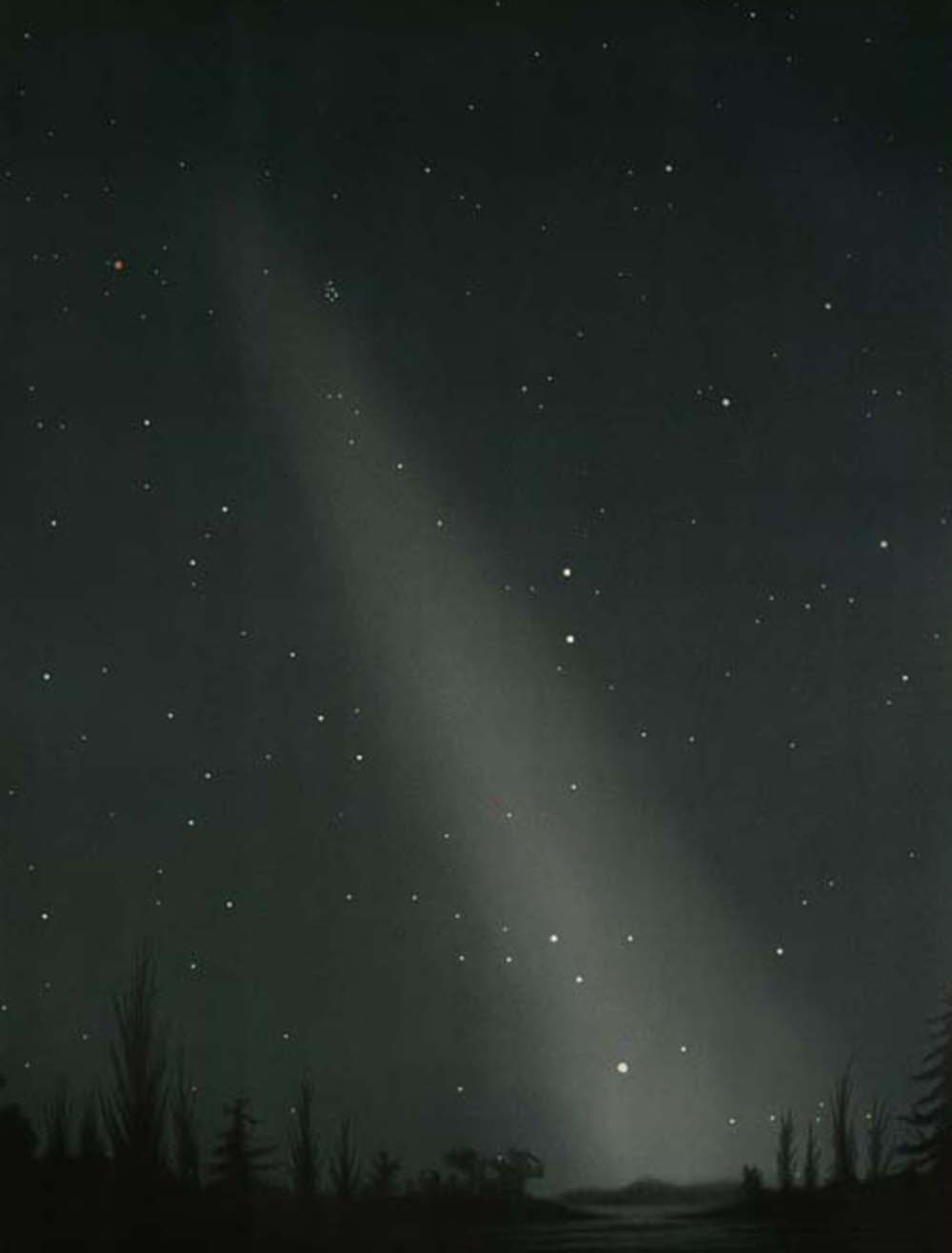
In 1964, five years after Hawaii became a state, the first telescope was built on Mauna Kea. Captain Cook had been astonished by the mountain, the highest point in the Pacific, “whose summit appeared above the clouds,” covered with a deep blanket of snow. Its peak seemed to touch heaven.
The name Mauna Kea means “white mountain.” That is true enough, but to the Hawaiians it was Mauna a Wākea, and the two extra syllables (only three letters more) make a world of difference: they change the meaning to “the mountain of Wākea.” In Hawaiian cosmology, Wākea is expansive space, the Sky Father, who impregnated Earth Mother. Together they created the islands. Mauna (a Wā)kea is the navel, or piko, which pointed the Hawaiians back to the Sky Father, to the stars. Many Hawaiians have buried the umbilical cords of their babies on the sacred mountain.
Mauna Kea holds an extensive deposit of basalt—a stone hard enough to cut, smooth, and carve wood—and when Cook arrived, though he didn’t know it, it was being quarried there to make the adze tools that were used to cut down koa trees and carve them out for canoes. The quarry is considered the largest preindustrial rock quarry in the world. Koa trees large enough to make canoes grew on the mountain. After they were built, canoes were “birthed” ritually by turning them from the mountain to point toward the sea.
It is no wonder, then, that the mountain—where the U.S. military now conducts bomb tests on 109,000 acres, where thousands of acres are taken over by astronomical observatories, where NASA conducts research for a mission to Mars—is a major front for Native Hawaiians defending their culture. It’s “not just ‘white mountain,’” a cultural historian named Kepa Maly testified to the Hawaii Island Burial Council in 2000. It’s “the mountain of Wākea, the progenitor of the Hawaiian race.” Maly was giving testimony because the installation of observatories on the mountain, mostly through funding from Caltech, NASA, and private donors from as many as eleven nations, disturbs burial grounds.
On the 13,802-foot mountain, a cloud inversion layer veils the island and ocean below and you become part of the sky, with a view of the broad streak of the Milky Way, unobscured by clouds. It is largely thought among modern astronomers that Mauna Kea is the best mountain on the planet from which to view outer space. It is currently home to thirteen telescopes and observation facilities, some among the largest in the world. A global community of astronomers, which combines the resources of many nations, has been seeking for years to build a telescope thirty meters across, but progress has been halted since 2014 due to Native Hawaiian resistance.
I recently visited the W.M. Keck Observatory—whose Mauna Kea telescopes are the world’s largest optical and infrared telescopes—where a docent (or “Guidestar,” as the observatory calls them) named Georjean Adams gave me a tour of the facility, pointing at photographs of star clusters and black holes taken by the telescopes. “Some people are making it hard to build our new telescope,” she told me.
In the observatories at Mauna Kea’s summit, the world’s leading astronomers—who have to apply to get a night’s worth of research time on the telescopes—are looking deep into space. “A lot of them are looking for the next earth,” Georjean said, stopping in front of a model of the snow-covered mountain with Keck’s massive domes on top. They are looking for new lands we might inhabit, the next frontier. I picked up a flyer that advertised an upcoming talk about Mauna Kea’s basalt. Chemical analyses have shown that the rock closely resembles the fine dust of the moon in its composition. Scientists have discussed how it might be used as a construction material for building on other planets.
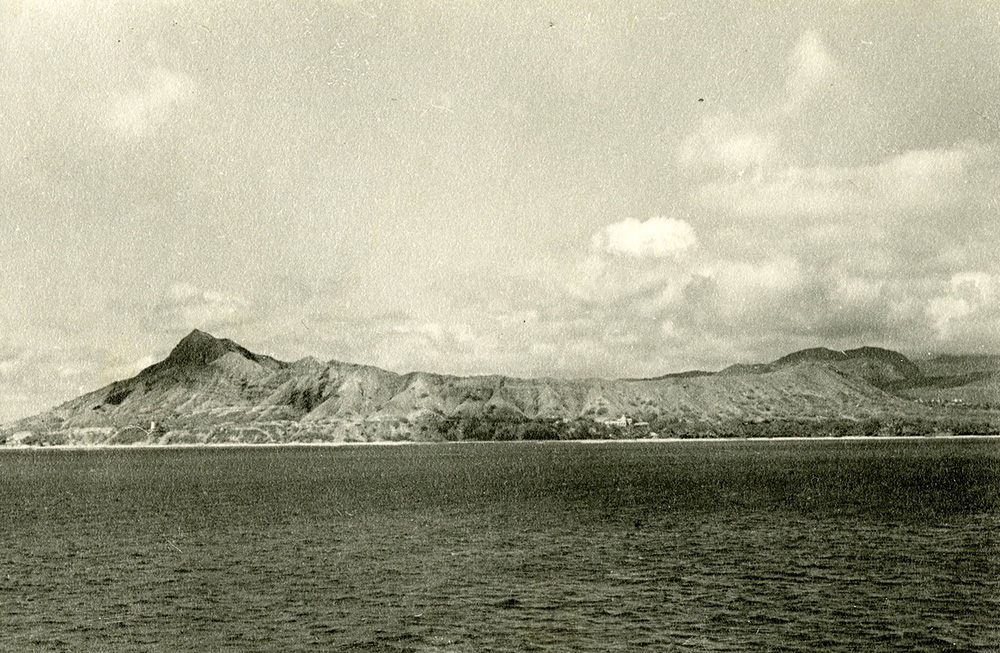
Still does the Hawaiian language survive. Even through many years of suppression, it can transmit to us the remnants of an ocean culture navigating its relationship with the cosmos. The word pō, for example, refers to deep dark space, while the related word po’o is the head that contains the gray-matter stuff that remains such a deep mystery, and lipo is the deep blue-black of the sea. Kana in the Kumulipo is a string being that can stretch itself infinitely through space, bringing to mind the string theory of modern physics. It is also the cordage that is used to lash the beams of the canoes—up to five miles of it per canoe wrapping beams to hulls in intricate patterns—and the line of the horizon that stretches endlessly. What seems to be cosmic, then, in the Hawaiian language is also going on inside us and on the earth.
In the Kumulipo creation chant, the dark is the source of all life, and the night gives birth (“Fruitful, very fruitful”). Night is thousands or millions of points of light. This we can see from here on our own planet, from out on the open sea, where we have a bright, clear view of a starfish arm of our sidereal galaxy while sliding over the wide surface of ocean in whose depths float jellyfish, octopus, squid, bioluminescent plankton, and a myriad of other out-of-this-world creatures, many of which light up as if from another dimension, intergalactic.
Out there, in the reflection off the water, you can see that space is not empty, not blank, but strung with the lights of heavenly bodies. When you learn and call their names, they will guide your way. In the glimmering water you can see very clearly that the earth is pregnant with stars.